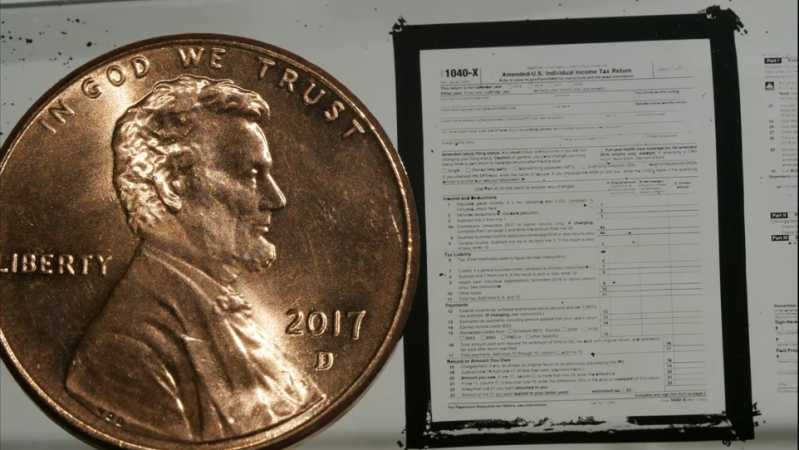In a time when cameras have been reduced to microchips, it’s ironic that the old view camera, with its bellows and black cloth draped over the viewscreen for focusing, endures as an icon for photography. Such technology appears dated and with no application in the modern world, but as [Ben Krasnow] shows us, an old view camera is just the thing when you want to make homemade microchips. (Video, embedded below.)
Granted, the photolithography process [Ben] demonstrates in the video below is quite a bit upstream from the creation of chips. But mastering the process on a larger scale is a step on the way. The idea is to create a high-resolution photograph of a pattern — [Ben] chose both a test pattern and, in a nod to the season, an IRS tax form — that can be used as a mask. The camera he chose is a 4×5 view camera, the kind with lens and film connected by adjustable bellows. He found that modifications were needed to keep the film fixed at the focal plane, so he added a vacuum port to the film pack to suck the film flat. Developing film has always been magical, and watching the latent images appear on the film under the red light of the darkroom really brings us back — we can practically smell the vinegary stop solution.
[Ben] also steps through the rest of the photolithography process — spin coating glass slides with photoresist, making a contact print of the negative under UV light, developing the print, and sputtering it with titanium. It’s a fascinating process, and the fact that [Ben] mentions both garage chip-maker [Sam Zeloof] and [Justin Atkin] from the Thought Emporium means that three of our favorite YouTube mad scientists are collaborating. The possibilities are endless.
















This guy is an absolute legend.
Linhof made film holders wit ha vacuum port on them for high resolution photography. They were not common, but I believe they can be found on ebay.
Ahh, the memories. One of my first jobs in the late 80’s was in a print shop, doing all of the traditional prepress work (layout, film, stripping). Having an entire darkroom, built around the camera back, is an interesting experience.
I cleaned out an old research lab when I started my masters degree that was dedicated to lithography using this exact method. Layout was done on a back-light table with glass top and a ‘gantry’ style manual drag knife. The mask material used in the camera was some kind of plastic film in two colors, red and clear. Features to be masked were cut away and inlaid with red film, and everything held together with clear tape. Finished ‘mask’ was then put in the back of a giant ‘camera’ (really just an enlarger turned sideways) and projected across the room onto a 25 mm glass plate covered in photoresist. I think the lab was researching types of LED junctions, but I never got a solid answer. It was probably 15 years ago that I cleaned out the space, and probably 5 more years before that since it was last used.
I’m pretty sure a good enlarger lens is designed to have flat-field focus so its performance is probably slightly better than a camera for this purpose.
Yes, and this one even more so, since it was specially designed for the purpose. Though how flat, I never found out. That portion of the system was scrapped before I got to it…
There are a whole class of lens historically designed for printing industry. These are called process lenses and last I looked quite available on ebay. One of the more popular is the Goertz Artar.
Anyone know where to get UV photoresist in small but affordable quantities. It seems like this is a big barrier to entry for the DIY crowd.
Of course, you can’t watch film being developed under red light. Film development requires dark dark.
Photosensitive paper, however, can be developed with a red safelight (because photosensitive paper is more sensitive to blue and less sensitive to red).
The process lens is also found in xerox duplicator machines.
Old industrial copiers are good sources of process lenses with very high lines per millimeter resolution and image flatness.
I have a Nikon 360mm f9 mounted for a Toyo 4×5 and it takes the most amazingly sharp images.
(unless it’s ortho film like Ben uses)
I somewhat resent the description “antique camera” as I still have that exact model, that I used in college…. But nice work!
I have some Graflex lensboards in a box here somewhere.
They were supposed to be Calumet lensboards, but had the Graflex groove instead of the Calumet bevel.
And it’s completely correct about the magic of watching the latent image appear.
Sooo… the hardest part of DIY bokodes, in other words. Nice!